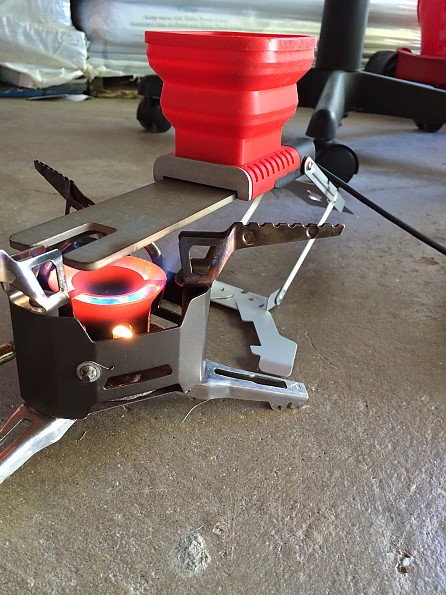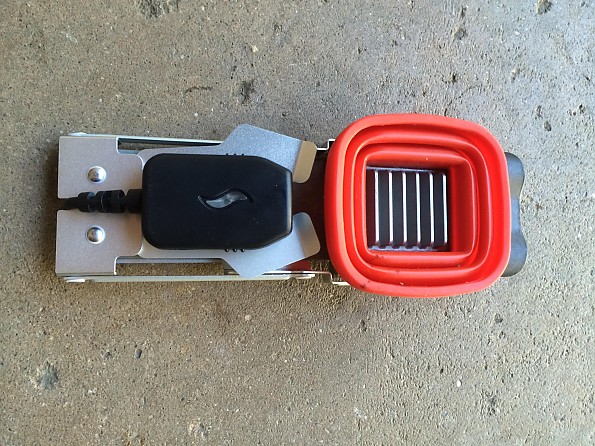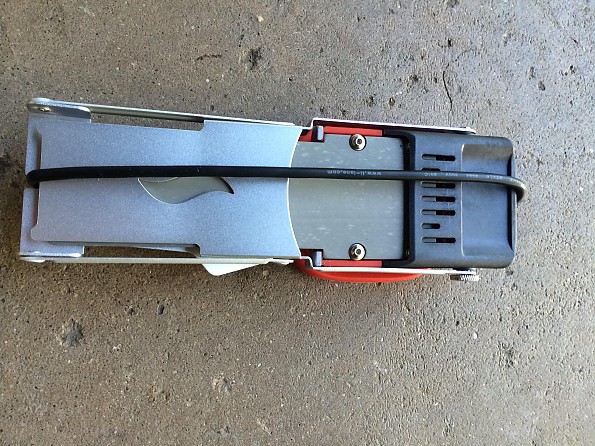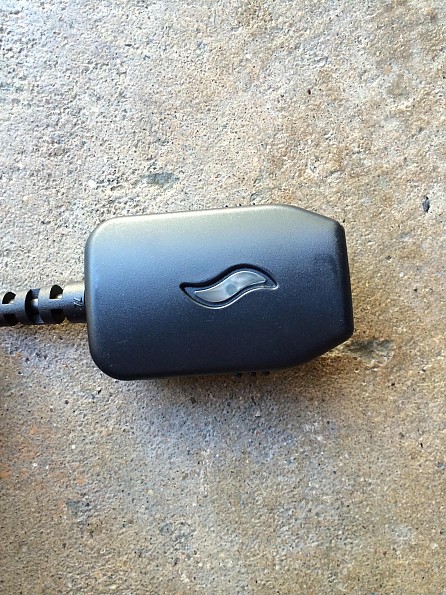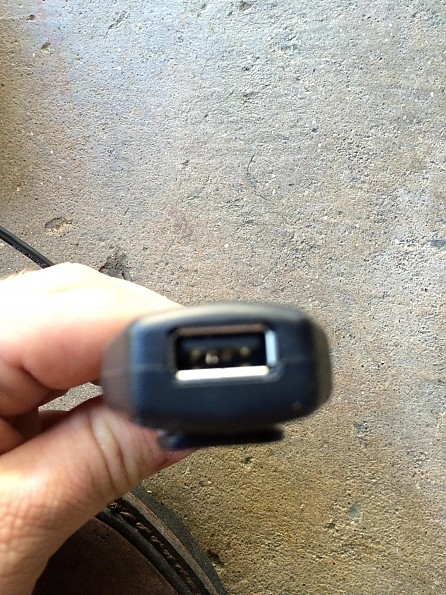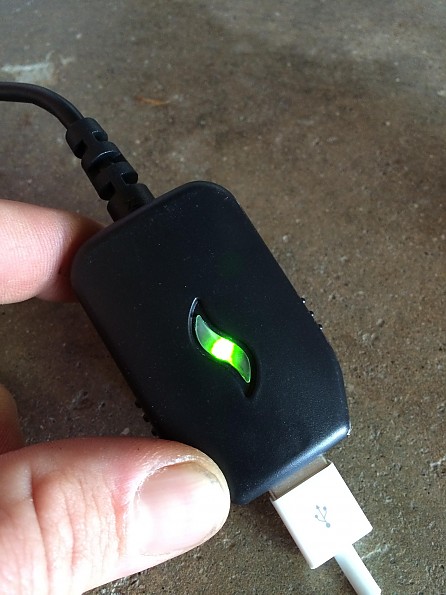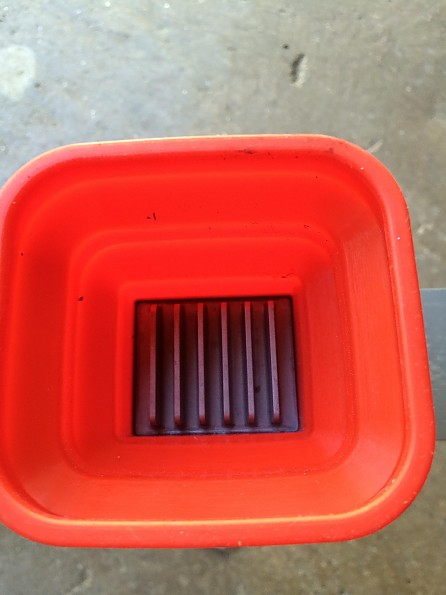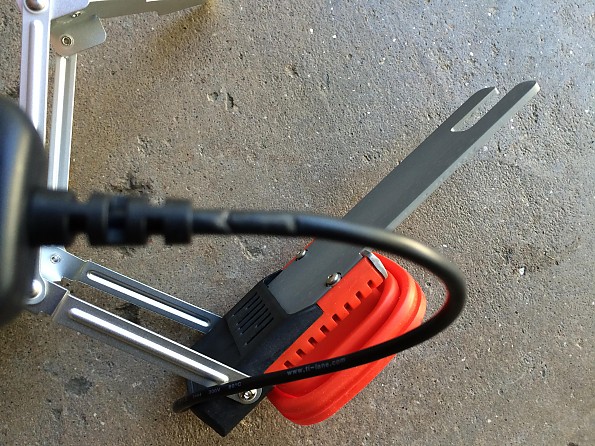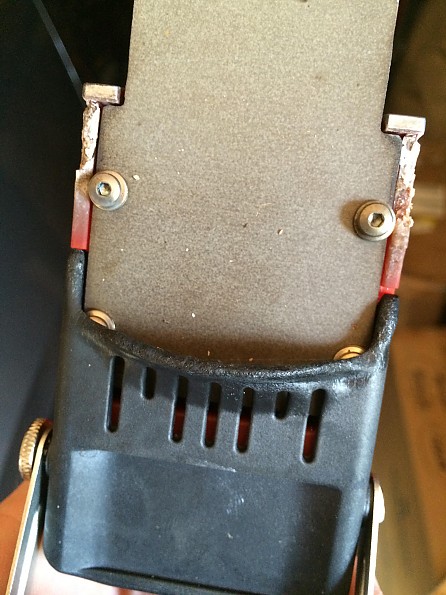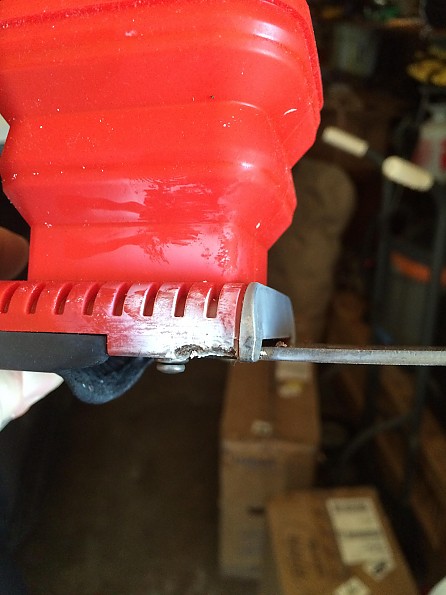FlameStower Heat Charger

The Flamestower’s technology is tried and true at this point in time. However, the product itself could use some design changes. With the Flamestower you will be able to charge most small electronic devices with the majority of backpacking and camp stoves on the market, as well as with a small camp fire.
Due to the nature of the Flamestower’s design, it may become damaged but still operable (for how long?) during normal use. As much as I wanted to like this product, I do not think I could recommend it at this point in time while there are other, similar, and more reliable products on the market.
Pros
- Charge your small electronic devices anywhere you have a stove or other adequate heat source
- Folds to a flat and compact package for packing
Cons
- Poor choice of materials
- Easily damaged during normal use
- Can be difficult to charge some devices
- Slow charge rate
- Tippy when used without a stove
Construction and Design:
The construction of the Flamestower appeared solid when I first removed it from the packaging. Sleek in appearance, weighing in at 10.1 oz, and able to fold down into a small, flat, easily packable device showed great promise.
The Flamestower is constructed mainly of aluminum and silicone. There are three main sections of the Flamestower, the TEG (thermal electric generator) body itself, the adjustable support, and the feet. All of the sections are able to be adjusted for height and angle to accommodate working with many different sizes and shapes of backpacking stoves.
The TEG body consists of the flame tounge, the TEG housing, collapsible water cup/reservoir, and the voltage regulator and USB port. Where the flame tounge connects to the main TEG body there is a transition from metal to a silicone shell or housing. Extending above the TEG housing is the water cup with a metal heat exchanger in the bottom to facilitate a better rate of heat transfer from the TEG.
From there the TEG transitions to the USB cable with a voltage regulator and USB port. The voltage regulator has a green LED to indicate when it is ready to charge your device.
The first model of the Flamestower I tested the USB cable was just a hair too short, and when you folded it down to pack it it would be a little tight and the section of metal designed to hold it in place would actually cut into the wire. With the second model this was not an issue, and it was either a design change or a manufacturing defect originally.
With only a few uses, the silicone housing/shell began to deform, discolor, and break down due to the heat it was exposed to. I feel this is a major design flaw. There should be a heat shield on the entire under side of the device to prevent this. This damage occurred to both Flamestowers I tested, the first of which became inoperable. The second one suffered the same distortion and damage to the housing, but remains operable up to this point.
Field use and test results:
I had the opportunity to test the Flamestower over the course of the last several months with a variety of backpacking stoves and other heat sources. My testing of the Flamestower yielded some mixed results.
iPhones: I found the Flamestower to be extremely finicky with charging an iPhone. It would always begin to charge when initially plugged in, but within a few minutes would stop charging and have to be unplugged and plugged back in for charging to resume. This is an issue directly related to the iPhone when used with a fluctuating or unstable power source, and in essence makes charging the phone with such a device a effort in futility.
My phone would usually lose more power than it gained from the Flamestower during the duration of charging. However, sometimes it would charge just fine for the duration of a test. I could find no rhyme or reason to the finicky charging behavior. Though I was able to confirm what was happening when this occurred. When a device would seemingly and randomly stop charging, this was due to the voltage regulator bogging down or collapsing and was verified with a multimeter. The voltage in these instances would drop below 3.3vDC (nominal is 5vDC).
GPS: I was able to successfully charge a Garmin Rhino GPS unit without issue with the Flamestower, though it was painfully slow.
Lights: I was also able to successfully charge a Light in Motion Solite 150 headlamp without issue , though it too was painfully slow.
Now, you may be wondering what I mean by painfully slow so let me elaborate. With a standard household outlet you can expect to gain about 1-2% of your batteries capacity per minute depending on the device. Most devices will recharge to full in about an hour to three hours, depending on the capacity of a given devices battery.
With the Flamestower in general, this was more than halved. I was lucky to ever see 1% of charge in 2 minutes on my iPhone, most often I would see a 1% charge in 3-4 minutes. This may not seem too bad at first glance, but since this device is designed to be mainly used with a stove that time equals fuel being needlessly expended for little gain. If you're using this with a small camp fire, then it is a mute point, or I also suppose it would not be an issue if you have sherpas carrying an unlimited fuel supply for your use. What the numbers above equate to is an average fuel canister burns for 60 minutes or about 17% charge figuring on 3.5 minutes per percent. I don’t know about you, but that isn’t really getting me excited.
So having noticed the unreliable charging of my iPhone, and the slow charging of other devices I decided to run a little test to see what was really going on. Using a fluke 287 multimeter, and a sacrificial iPhone usb charger I made a test setup for an iPhone so that I could measure the voltage and current while the Flamestower was in use. With no load (iPhone not connected to the Flamestower) the Flamestower would hold a fairly steady 5vDC, occasionally dipping to 4.7vDC, and peaking at 5.1vDC.
As soon as the iPhone was connected the voltage would sag substantially to anywhere from 2.8-4.5vDC. Measuring the current going to the iPhone revealed it was a miniscule .2A on average at 4vDC. This equates to .8W, far below the claimed 2.5W. This explains why the Flamestower charges devices so painfully slow.
The Flamestower does not always charge this slow, but I could find no rhyme or reason to it; it seemed randomly it would come back closer to its nominal range of 5vDC at 2.5W charging rate. Now the question is why is the Flamestowers voltage saging. I think the size of the TEG is inadequate for its intended purpose. Compared to other TEGs on the market, some of which I have also tested, the Flamestower pales in comparison when it comes to charging rates.
I think I truly tried everything to get the Flamestower to work at its peak for an extended period of time. The only thing I found that helped substantially was to place chunks of ice into the water reservoir along with water. With such a big temperature differential the Flamestower seemed to stay closer to nominal output. If the water was simmering or boiling I would begin to see the voltage oscillate and become unsteady.
The Flamestower instructions state that the device will work without water, but that it works much better with it. I was unable to charge any device for longer than about 2 seconds with no water in the Flamestower. So I would have to say that while the device might technically “work” it sure won't charge anything without water. Water is required.
Conclusion:
The Flamestower does work, and does what it claims, though not reliably. Good concept, but poor design. I think that there are other more reliable and effective TEG products on the market that would better suit most people looking for this type of device. Perhaps with a product revamp or complete redesign the Flamestower would be a more viable option, but as it is now I would not be able to recommend this product to anyone.
Source: received for testing via the Trailspace Review Corps
(Sample provided by FlameStower for testing and review)
Does not work!
Pros
- No
Cons
- Does not work
Tested it for 1.5 hours at various distances from the gas stove and including putting an ice into the water. Did not charge a single percent—neither my phone (HTC First) nor my satellite communicator InReach.
Source: bought it new
Price Paid: $40


